North Seymour and More. Twice!
North Seymour Island is one of the three consistently great photo landings on a Galapagos trip. The others are Darwin Bay on Genovesa and Punta Suárez on Española (Hood) Island. Each is a world class photographic location ranking up there with locations in East Africa and the Southern Ocean. On every BAA Galapagos Photo-Cruise of a Lifetime, we visit each of these locations twice. Mine is the only photography workshop to arrange such an itinerary.
If you would like to join me on this trip in mid-August 2024, stay tuned or shoot me an e-mail. Remember that you only live once.
Your Call?
Which two of today’s ten featured North Seymour images are your favorites and which is the weakest? Please be so kind as to leave a comment and be sure to let us know why you made your choices.
What’s Up?
After an exhausting 12 1/4 hour door-to-door journey (with a summer cold), I traveled yesterday from Guayaquil, Ecuador to my home at Indian Lake Estates, FL arriving at 4:45pm. Huge thanks to my right hand man Jim Litzenberg for picking me up at MIA. Photographically, the 2023 Galapagos Photo-Cruise of a Lifetime was a huge success in spite of the fact that the trip featured more sun than any of my previous visits to the archipelago. I will be announcing details of the proposed 2024 workshop here soon. This blog post took more than seven hours to prepare.
Today is Thursday 14 September 2023 and I have lots of catching up to do. Wherever you are an whatever you are doing, I hope that you too have a great day.
Please remember to use the B&H and Amazon links that are found on most blog pages and to use the BIRDSASART discount code at checkout when purchasing your new gear from Bedfords to get 3% back on your credit card and enjoy free second-day air FedEx. Please, also, consider joining a BAA IPT. You will be amazed at how much you will learn!
You can find some great photo accessories (and necessities, like surf booties!) on Amazon by clicking on the Stuff tab on the orange/yellow menu bar above. On a related note, it would be extremely helpful if blog-folks who, like me, spend too much money on Amazon, would get in the habit of clicking on the Amazon logo link on the right side of each blog post when they shop online. As you might expect, doing so will not cost you a single penny, but would be appreciated tremendously by yours truly. And doing so works seamlessly with your Amazon Prime account.
If an item — a Delkin flash card, or a tripod head — for example, that is available from B&H and/or Bedfords, is also available in the BAA Online Store, it would be great, and greatly appreciated, if you would opt to purchase from us. We will match any price. Please remember also to use my B&H affiliate links or to earn 3% cash back at Bedfords by using the BIRDSASART discount code at checkout for your major gear purchases. Doing either often earns you free guides and/or discounts. And always earns my great appreciation.
Stop Deadly Conditions for NY Songbirds by Turning Out Building Lights at Night
Learn more about the senseless slaughter every spring and fall and sign the petition here.
|
|
|
This image was also created on 29 August 2023 on a BIRDS AS ART Instructional Photo-Cruise of a Lifetime at North Seymour Island in the Galapagos archipelago, Ecuador. I used the hand held Sony FE 200-600mm f/5.6-6.3 G OSS lens with the Sony FE 1.4x Teleconverter (at 840mm) and The One, the Sony Alpha 1 Mirrorless digital camera. The exposure was determined via Zebras with ISO on the Thumb Wheel: ISO 1250. RawDigger showed that the exposure, 1/1600 sec. at f/9 (wide open) in Manual mode, was perfect. AWB at 4:51:22pm on a sunny afternoon. Tracking: Expand Spot S/AF-C with Bird Eye/Face Detection enabled performed perfectly. Click on the image to enjoy a larger, sharper, high res version. Image #1: Great Frigatebird Male displaying with pouch inflated image
|
The 200-600 at 840mm
On bright sunny days, I have long suggested that folks strive to work tight and right on sun angle with their shadow pointed right at the subject. Adding the 1.4X TC to the incredibly versatile Sony 200-600 enabled me to do just that while eliminating distracting elements of the backgrounds.
|
|
|
This image was also created on 29 August 2023 on a BIRDS AS ART Instructional Photo-Cruise of a Lifetime at North Seymour Island in the Galapagos archipelago, Ecuador. I used the hand held Sony FE 200-600mm f/5.6-6.3 G OSS lens with the Sony FE 1.4x Teleconverter (at 840mm) and The One, the Sony Alpha 1 Mirrorless digital camera. The exposure was determined via Zebras with ISO on the Thumb Wheel: ISO 1600. RawDigger showed that the exposure, 1/1000 sec. at f/11 (stopped down 2/3 stop) in Manual mode, was perfect. AWB at 5:21:11pm on a sunny afternoon. Tracking: Expand Spot S/AF-C with Bird Eye/Face Detection enabled performed perfectly. Click on the image to enjoy a larger, sharper, high res version. Image #2: Blue-footed Booby preening single feather image |
The Incredible Tameness of the Creatures of the Enchanted Islands
Everyone in the group was astounded by the tameness of the birds and animals we encountered on our voyage. For the most part, the creatures we encountered were virtually unaware of our presence. National park rules permit an approach of 2 meters, 6.6 feet. That unless a bird or animal approaches you.
On our first landing at North Seymour, which was also the first landing of the trip, I remember sitting on a rock next to my friend Muhammad Arif photographing the preening booby in Image #2 and discussing possible image designs and motifs. That after he asked, what are you trying for?
Though I kept more than a few images from the series, this upside-down blue-footed photo that showed both eyes well was my very favorite.
|
|
|
This image was also created on 29 August 2023 on a BIRDS AS ART Instructional Photo-Cruise of a Lifetime at North Seymour Island in the Galapagos archipelago, Ecuador. I used the hand held Sony FE 200-600mm f/5.6-6.3 G OSS lens (at 600mm) and The One, the Sony Alpha 1 Mirrorless digital camera. The exposure was determined via Zebras with ISO on the Thumb Wheel: ISO 2000. RawDigger showed that the exposure, 1/500 sec. at f/6.3 (wide open) in Manual mode, was perfect. AWB at 5:40:53pm on a mostly sunny afternoon. Click on the image to enjoy a larger, sharper, high res version. Tracking: Expand Spot S/AF-C with Bird Eye/Face Detection enabled performed perfectly. Image #3: Magnificent Frigatebird adult male on nest image
|
Soft Backlight
A light cloud momentarily in front of the sun provided the gentle backlight that made this image possible and successful. The 200-600mm at 600mm provided the reach that I needed to create this head portrait. And Sony Zebras, property set, enabled me to come up with a workable exposure with the rim light over-exposed just a bit, allowing me to reveal detail on the shadowed side of the subject.
|
|
|
This image was also created on 29 August 2023 on a BIRDS AS ART Instructional Photo-Cruise of a Lifetime at North Seymour Island in the Galapagos archipelago, Ecuador. I used the hand held Sony FE 200-600mm f/5.6-6.3 G OSS lens with the Sony FE 1.4x Teleconverter (at 612mm) and The One, the Sony Alpha 1 Mirrorless digital camera. The exposure was determined via Zebras with ISO on the Thumb Wheel: ISO 2500. RawDigger showed that the exposure, 1/1000 sec. at f/13 (stopped down one stop) in Manual mode, was perfect. AWB at 6:00:54pm on a sunny afternoon. Manual Focus with (yellow) Focus Peaking. Click on the image to enjoy a larger, sharper, high res version. Image #4: Galápagos Sealion backlit at sunset image |
Manual Focus in Strongly Backlit Situations
In strongly backlit situations, the AF systems of almost all Digital camera bodies (including the most sophisticated mirrorless bodies), will not be able to achieve sharp focus. The trick is to focus manually and rely on Focus Peaking. This technique, of course, works best when you are on a tripod. As I was handholding, I used the knee-pod technique and strove to keep the lens as still as possible. Most of the images were not critically sharp. Image #4 was!
|
|
|
This image was created two weeks later on 12 September 2023 on a BIRDS AS ART Instructional Photo-Cruise of a Lifetime at North Seymour Island in the Galapagos archipelago, Ecuador. I used the hand held Sony FE 200-600mm f/5.6-6.3 G OSS lens (at 506mm) and The One, the Sony Alpha 1 Mirrorless digital camera. The exposure was determined via Zebras with ISO on the Thumb Wheel: ISO 1600. RawDigger showed that the exposure, 1/1250 sec. at f/6.3 (wide open), in Manual mode, was perfect. AWB at 6:13:31am on a sunny morning. Tracking: Zone/AF-C with Bird Eye/Face Detection enabled performed perfectly. Click on the image to enjoy a larger, sharper, high res version. Image #5: Blue-footed Booby displaying image
|
Zooming Out a Bit When Needed
Zooming out a bit from 600mm enabled me to avoid clipping the booby’s wings when it raised them during its display. Again, I was seated on a rock to control the background.
|
|
|
This image was also created on 12 September 2023 on a BIRDS AS ART Instructional Photo-Cruise of a Lifetime at North Seymour Island in the Galapagos archipelago, Ecuador. I used the hand held Sony FE 200-600mm f/5.6-6.3 G OSS lens (at 506mm) and The One, the Sony Alpha 1 Mirrorless digital camera. The exposure was determined via Zebras with ISO on the Thumb Wheel: ISO 1600. RawDigger showed that the exposure, 1/3200 sec. at f/6.3 (wide open) in Manual mode, was perfect. AWB at 6:25:22am on a sunny morning. Tracking: Zone/AF-C with Bird Eye/Face Detection enabled performed perfectly. Click on the image to enjoy a larger, sharper, high res version. Image #6: Great Frigatebird male in flight at point blank range image
|
Encouragement
With both the wind and the sun behind us and dozens of frigatebirds flying right at us — many at close range, conditions for flight photography were dead solid perfect. I encouraged all in the group — even those not using Sony gear, to try for some flight head shots by continuing to track the birds as they got closer and closer. For me, Image #6, above, the full frame BWT, was BINGO!
|
|
|
This image was also created on 12 September 2023 on a BIRDS AS ART Instructional Photo-Cruise of a Lifetime at North Seymour Island in the Galapagos archipelago, Ecuador. I used the hand held Sony FE 200-600mm f/5.6-6.3 G OSS lens (at 388mm) and The One, the Sony Alpha 1 Mirrorless digital camera. The exposure was determined via Zebras with ISO on the Thumb Wheel: ISO 1600. RawDigger showed that the exposure, 1/3200 sec. at f/6.3 (wide open) in Manual mode, was perfect. AWB at 6:28:46am on a sunny morning. Tracking: Zone/AF-C with Bird Eye/Face Detection enabled performed perfectly. Click on the image to enjoy a larger, sharper, high res version. Image #7: Swallow-tailed Gull adult landing at nest image
|
Zooming Out a Lot When Needed
Zooming out from 600mm to 388mm enabled me to fit the whole gull in the frame as it landed quite near me. In situations like this, I use a technique that I call “esti-zooming.” As I see a bird approaching to what will likely become close range, I will estimate the focal length that I will need to fit the bird in the frame and zoom out accordingly. You might call it “guess-ti-zooming.”
|
|
|
This image was also created on 12 September 2023 on a BIRDS AS ART Instructional Photo-Cruise of a Lifetime at North Seymour Island in the Galapagos archipelago, Ecuador. I used the hand held Sony FE 200-600mm f/5.6-6.3 G OSS lens (at 524mm) and The One, the Sony Alpha 1 Mirrorless digital camera. The exposure was determined via Zebras with ISO on the Thumb Wheel: ISO 1600. RawDigger showed that the exposure, 1/1000 sec. at f/6.3 (wide open) in Manual mode, was perfect. AWB at 6:59:22am on a then cloudy-bright morning. Tracking: Expand Spot/AF-C with Bird Eye/Face Detection enabled performed perfectly. Click on the image to enjoy a larger, sharper, high res version. Image #8: Great Frigatebird large chick in nest image
|
Subject-to-Background Distance
Many folks profess that the f/6.3 aperture of the Sony 200-600 will always bring up unwanted background detail. As you can see in Image #8 above, that is faulty reasoning. The distance from the subject to the background is far more important than the aperture when you are striving to create soft, pleasingly out-of-focus backgrounds. With the vegetation probably six to eight feet behind the subject, the green and brown leaves were rendered pleasingly de-focused.
|
|
|
This image was also created on 12 September 2023 on a BIRDS AS ART Instructional Photo-Cruise of a Lifetime at North Seymour Island in the Galapagos archipelago, Ecuador. I used the hand held Sony FE 200-600mm f/5.6-6.3 G OSS lens with the Sony FE 1.4x Teleconverter (at 840mm) and The One, the Sony Alpha 1 Mirrorless digital camera. The exposure was determined via Zebras with ISO on the Thumb Wheel: ISO 1600. RawDigger showed that the exposure, 1/1000 sec. at f/9 (wide open) in Manual mode, was perfect. AWB at 7:35:50pm on a once again sunny morning. Tracking: Expand Spot S/AF-C with Bird Eye/Face Detection enabled performed perfectly. Click on the image to enjoy a larger, sharper, high res version. Image #9: Great Frigatebird small chick in nest image |
Patience
Near the end of our last (and second) walk on the North Seymour dry landing, I noticed a tiny white fluff-ball of-a-chick peeking out from under a male Great Frigatebird on the nest. All in the group gathered around and picked a spot. I went for one right on sun angle. We all waited patiently. The chick emerged and shutters fired away. When the chick got fed, I was totally blocked by the wing of the adult. Several others in the group were in perfect position to capture the action and did just that.
|
|
|
This image was also created on 12 September 2023 on a BIRDS AS ART Instructional Photo-Cruise of a Lifetime at North Seymour Island in the Galapagos archipelago, Ecuador. I used the hand held Sony FE 200-600mm f/5.6-6.3 G OSS lens (at 524mm) and The One, the Sony Alpha 1 Mirrorless digital camera. The exposure was determined via Zebras with ISO on the Thumb Wheel: ISO 500. RawDigger showed that the exposure, 1/1000 sec. at f/8 (stopped down 2/3 stop) in Manual mode, was perfect. AWB at 8:18:47am on a sunny morning. Tracking: Expand Spot/AF-C performed perfectly. Bird Eye/Face Detection was both enabled and irrelevant. Click on the image to enjoy a larger, sharper, high res version. Image #10: Swallow-tailed Gull close-up of adult’s feet image
|
Never Quit
At the very end of our second walk around North Seymour Island, a world class photo location for sure, I was standing above the steps that led down to the landing when an adult Swallow-tailed Gull landed perhaps eight feet from me. I stopped down a bit and went back to work. This was my favorite of about a dozen images. Then it was time to get back on the Samba, finish packing, say goodbye to the crew, and head for the airport on Baltra.
Typos
With all blog posts, feel free to e-mail or to leave a comment regarding any typos or errors.

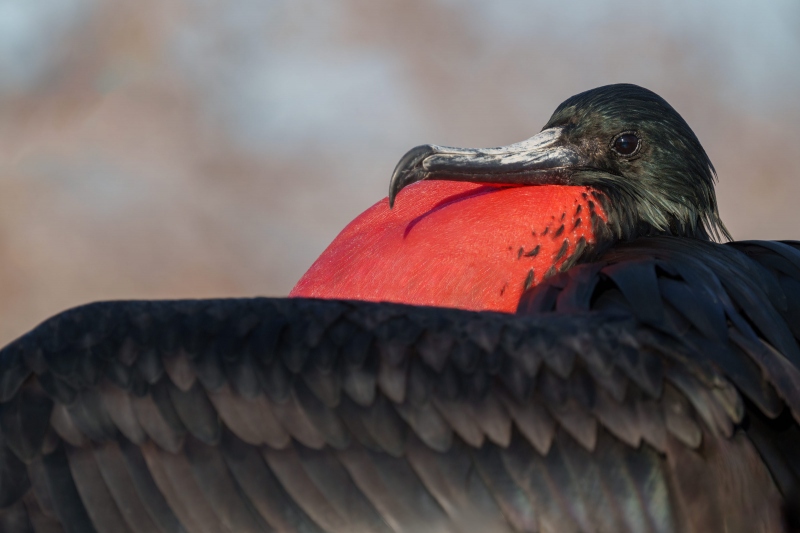
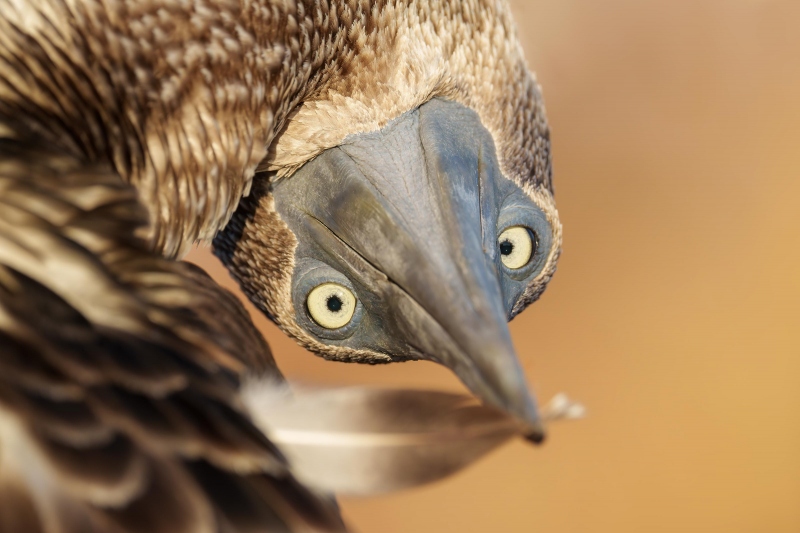
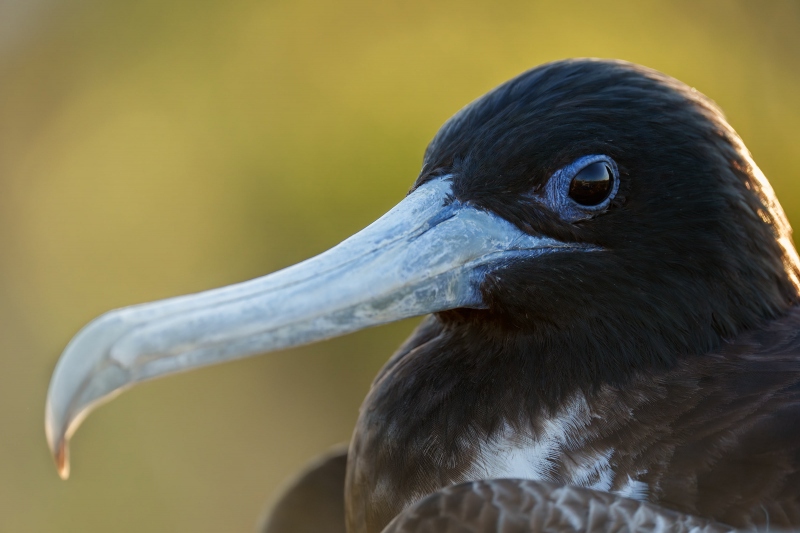
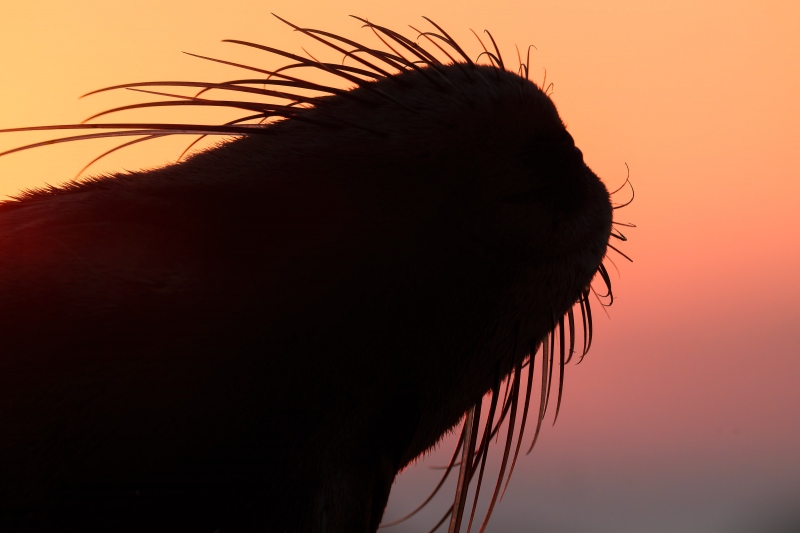
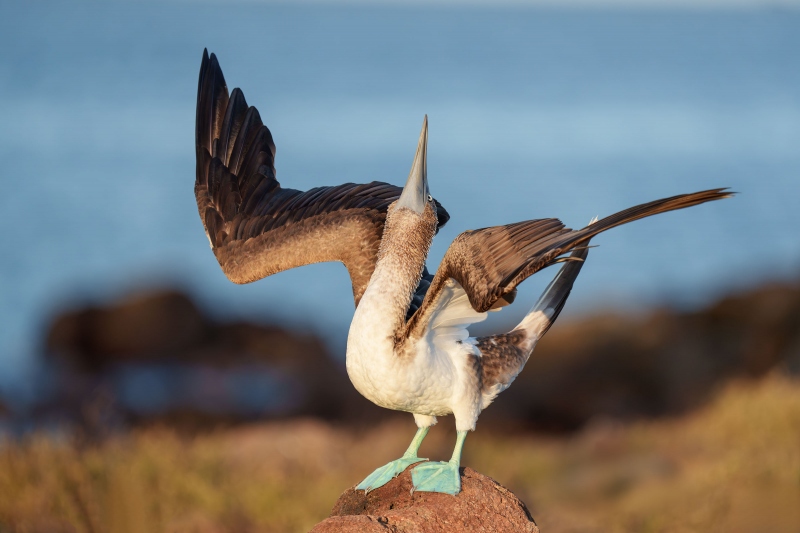

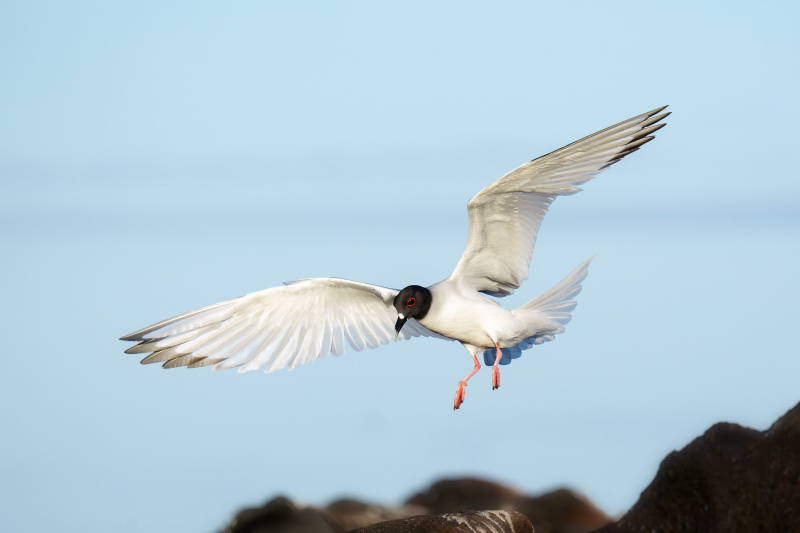
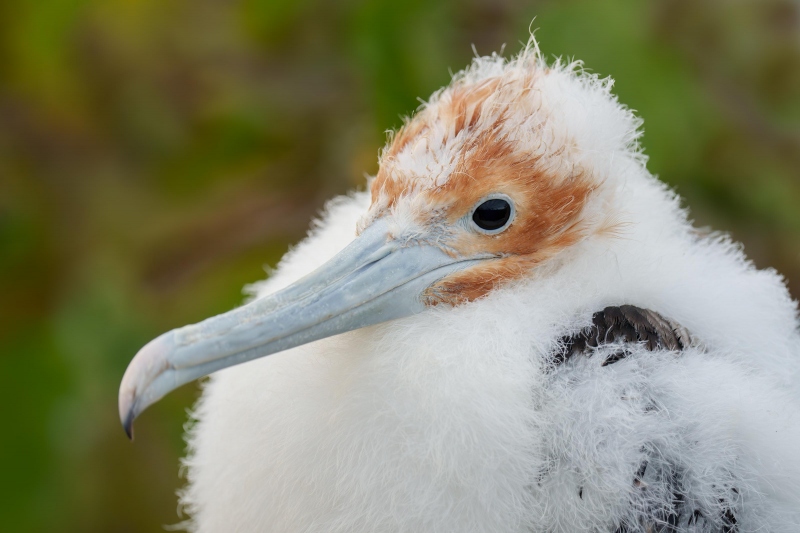
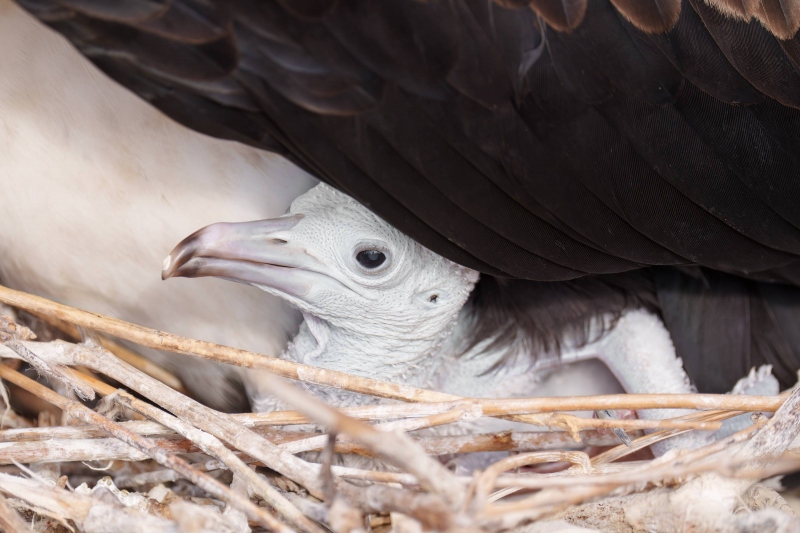
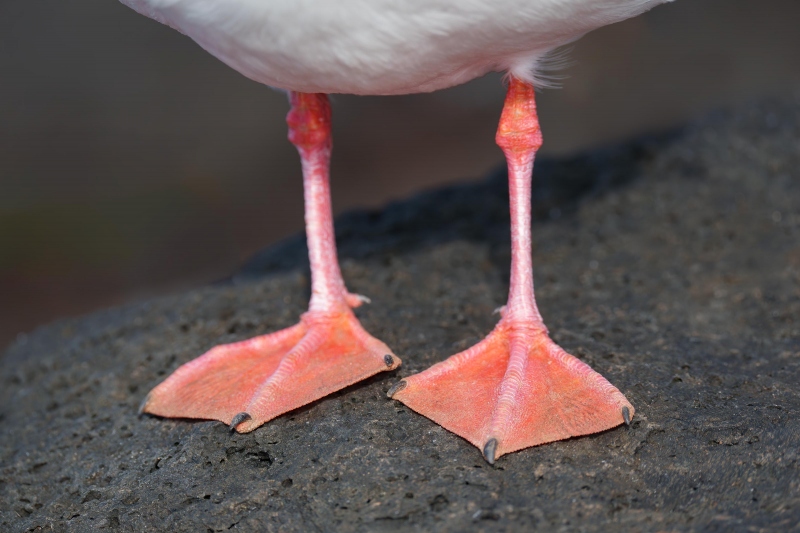













Image #2 is my favorite followed by #4, sealion silhouette.
All of them are great, sealion silhouette included.
I like #2 where you were laying on your back shooting upside down!!!! Glad you made it home & to your bed for rest. In a month or so the jet lag will wear off!
Welcome back, Artie. Image #2 is my favorite. There are no “weak” images IMO.
Great shots, Artie! Glad you are still going back to Galapagos. It really was the trip of a lifetime when I went with you back in 2013.
The three photos after Image #7 should be image #8 and #9 and #10 instead of images being #9, #10, and #11. All the images are interesting except image #4 is too dark to see the Galápagos Sealion!
Thanks for catching my numbering error.
a